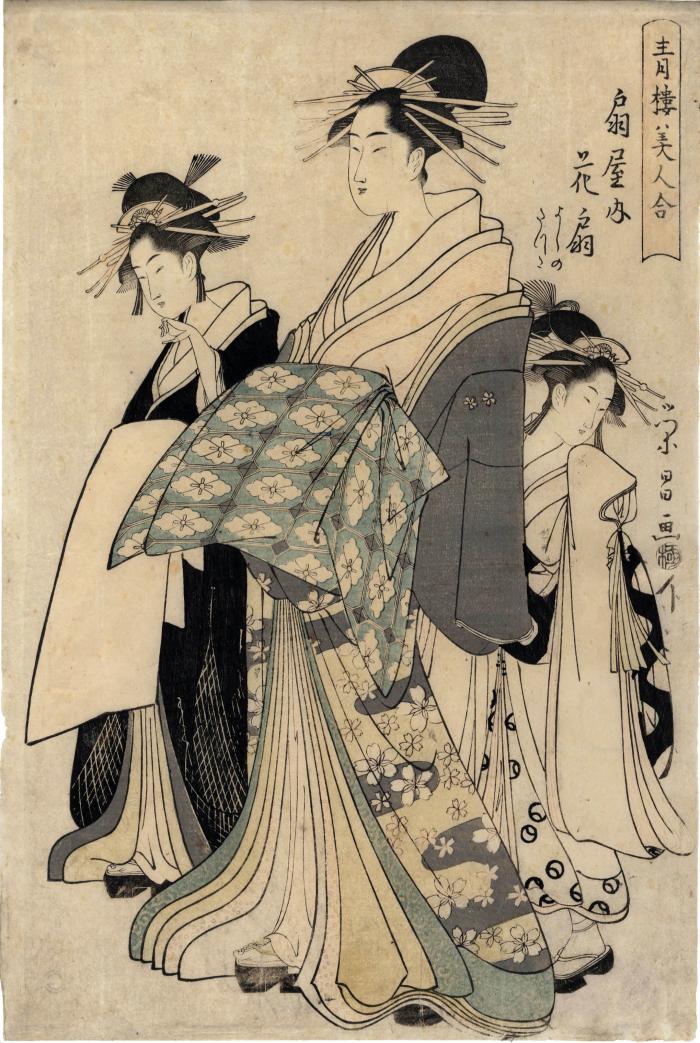Chōkōsai Eishō (鳥高斎栄昌) (artist )
Hanaōgi (花扇) of the Ōgiya house (扇屋内) with kamuro Yoshino (よしの) and Tatsuta from the series Comparison of Beauties of the Pleasure Quarters (Seirō bijin awase - 青楼美人合)
ca 1795 – 1798
10.1875 in x 15.125 in (Overall dimensions) Japanese woodblock print
Signed: Eishō ga (栄昌画)
Publisher: Yamaguchiya Chūsuke
(Marks 590 seal 05-001)
Censor's seal: kiwame
Museum of Fine Arts, Boston The names of the two kamuro, Tatsuta and Yoshino, can not be a coincidence. Elena Varshavskaya in her Heroes of the grand pacification: Kuniyoshi's Taiheiki eiyū den, in endnote 42.2 says in reference to the text on a warrior print says: "This expression is used as a metaphor for splendour and abundance. Yoshino and Tatsuta are two places situated not far from Kyoto and celebrated for their seasonal beauty. Yoshino is famous for its spring cherry blossoms while the glory of Tatsuta is in its autumn red maple leaves. These two sites became widespread symbols of spring and autumn and often appear in poetry and pictorial art as an established pair."
****
Eishi may have portrayed the same Hanaōgi with these girls in the early 1790s. Utamaro also portrayed a slightly later Hanaōgi of the Ōgiya house, with the same named attendants, Yoshino and Tatsuta. Kunisada in ca. 1831 portrayed another Hanaōgi, an even later holder of this name, in an aizuri-e, along with two new kamuro with the same names, splendour and abundance galore.
Actually in another print by Kunisada from the 1830s these two kamuro accompany a courtesan named Masanagi of the Tamaya house. Therefore, this must have been a favorite combination of names to apply to the assistants of prominent oiran.
beautiful woman picture (bijin-ga - 美人画) (genre)
Yamaguchiya Chūsuke (山口屋忠助) (publisher)
